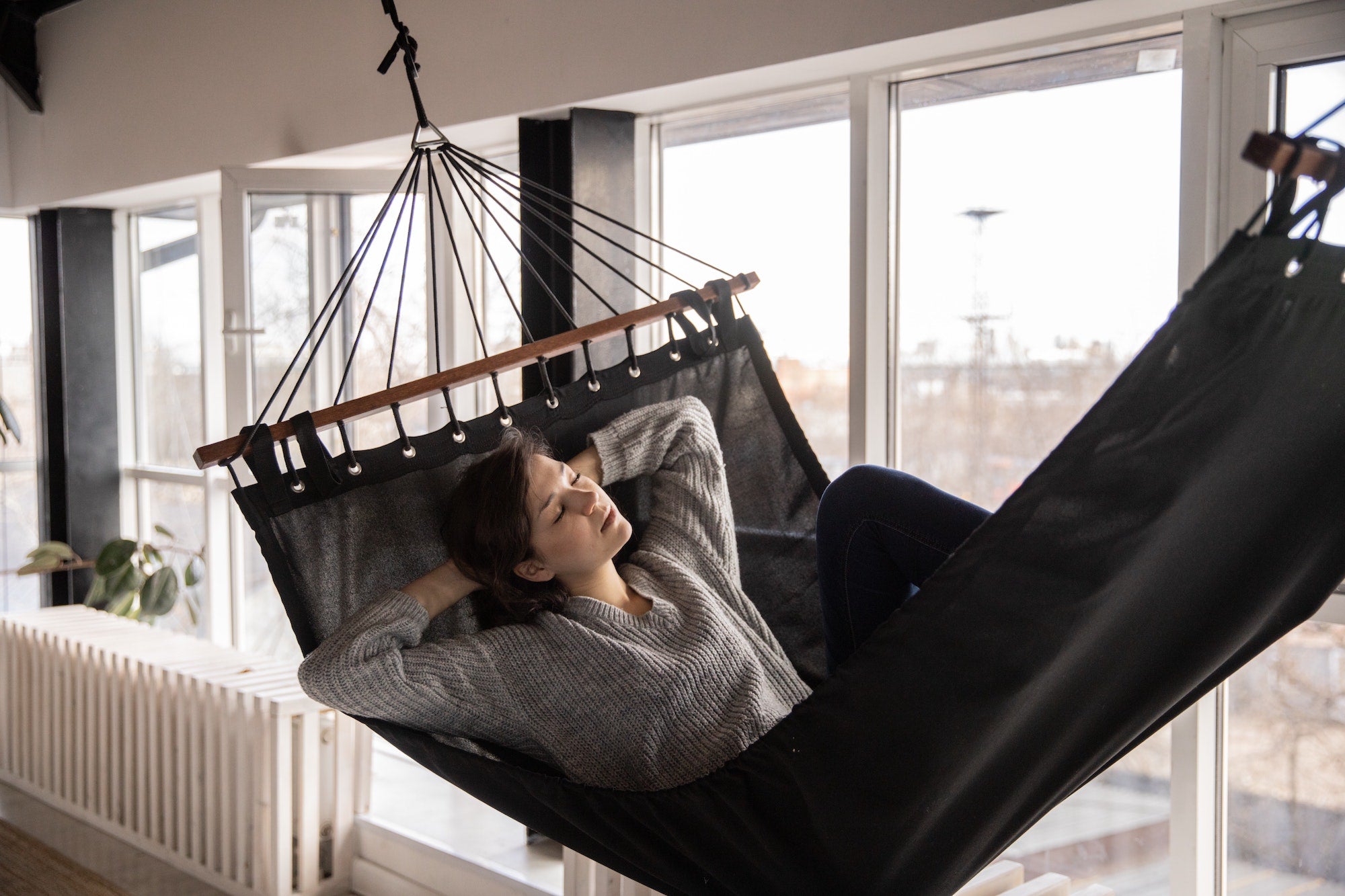5 Kinds of Naps and the Right One for You
A good night’s sleep is fundamental for our well-being. Most of us need at least 8 hours of restorative sleep per night in order to function correctly throughout the day.
However, napping can also be a powerful tool to add to your repertoire. It can be a great aid if you mean to recover some lost sleep after a rough night or to just give yourself a boost of energy on a particularly draining day.
There is more than one way to nap, which is essential because different naps can be used to accomplish different objectives. Naps can also have their own drawbacks if not taken with care. We will go over both sides of the issue while covering the subject.
Let’s take a look at the world of napping, the five most important kinds of naps, and how you can find the one that’s made for you.
What is a nap, and how to classify them?
A nap can be understood as a short sleeping period that is taken during the day, with the objective of regaining some energy. There is more than one way of napping, and different naps can be classified using the following criteria: how long they last and what is the objective of the nap.
We’ll look at the 5 different types of naps, including their recommended duration and the objective behind them.
The power nap
You’ve probably heard of a power nap before. This is because power naps are quite popular, and not only for their catchy term.
Power naps are a classic for the workplace, because they are short naps you can take in environments that require a high level of alertness, like the office.
A power nap usually lasts from ten to twenty minutes and is used to recharge some energy quickly and get back to work.
This nap is also known as the cat nap, and aside from being a great way to restore energy, it is also a great way to improve our mood and relieve stress.
Recover some energy with the recovery nap
The recovery nap is a kind of nap that is used with the purpose of recovering from a rough night of poor sleep. Sometimes, for different reasons, we don’t get the proper amount of sleep and we need to restore our cognitive functions.
Maybe you went out for a drink with a friend, or maybe you were stressed, or your neighbors threw a party—whatever the reason, recovery naps are there for the rescue.
It is important to understand that naps can’t fully recover or replace a good night’s sleep, but a good recovery nap can lessen the impact that sleep deprivation may have on your body.
The NASA nap
The NASA nap is a power nap that has been broadly supported by science and backed up by NASA. NASA discovered that the ideal nap is around 26 minutes, with data to prove it based on research made on NASA pilots.
According to their conclusions, pilots who took a “NASA nap” showed 54% more alertness than pilots who didn’t take naps. Researchers also observed up to a 34% improvement in performance.
With this kind of evidence, there is no reason you shouldn’t try it, it is only six minutes longer than a power nap, and you can easily go back to cat naps if the six extra minutes don’t pay off.
Prophylactic nap
Do you recall the recovery nap? Well, you can think about the prophylactic nap as a preemptive recovery nap.
The idea of the prophylactic nap is that it is a kind of nap that you take when you know you are not going to get the necessary amount of sleep later in the night, and it is used to alleviate the fatigue you may face as the night progresses.
This kind of nap is quite useful if you know you will be going to sleep late and is a very common tool for those that work night shifts.
The full-cycle nap
Full cycle naps are one of the longest naps you can take, with a precise length of 90 minutes. It is called the full cycle nap because 90 minutes is the amount of time it usually takes to go through a full REM sleep cycle.
This kind of longer nap lets you enter into a deep sleep state, and with a full sleep cycle, you reap all the restorative benefits of deeper sleep.
Benefits and drawbacks of napping
Napping can be a healthy and effective choice for getting sufficient rest if used appropriately. Taking a nap can be a great way to recover from a night where you had trouble sleeping or where work or life interfered with your normal sleep schedule.
However, there are certain drawbacks to napping if you don’t follow some guidance.
Let’s look at some of the benefits of napping, before diving into the potential drawbacks.
Benefits of napping
We already know that napping correctly raises alertness and may help reduce fatigue, but did you know it also has a positive impact on other functions?
Napping can improve working memory
Daytime naps have been shown to improve the function of working memory, while also being helpful in memory consolidation.
Napping can help with emotional regulation
A good nap can help with mood regulation. People who nap show improvements in how they perceive their mood and also how they regulate their moods.
Naps can improve the immune system
Napping may have a positive impact on our immune system, making us less likely to fall ill.
Possible drawbacks of napping
Naps are usually safe and functional if you follow some simple recommendations.
You may have heard that shorter naps are recommended to avoid any possible negative consequences, however, it is a bit more complicated than that.
Science suggests that you should take shorter naps, up until you cross the thirty-minute barrier, in which case going for the full cycle nap might be the best choice.
The issue usually lies in the drawbacks associated with interrupting a cycle once deep sleep has been achieved. This is because interrupting a cycle once properly initiated can lead to sleep inertia, which brings grogginess and/or disorientation.
The best option is to go for short power naps or full cycle, longer naps. The in-between naps are those that may be problematic.
Another possible complication of napping is that it may disrupt night sleeping, so naps should only be used with a specific need in mind.
Tips for appropriate napping
Now that you have a better understanding on how naps can affect your well-being in a positive way, let’s look at a couple of tips you can use to avoid the potential drawbacks of improper napping.
Choose the best time of day
As you can probably imagine, if you take a nap too close to nighttime you run the risk of disrupting nighttime sleep. On the other hand, if you nap too early you might as well stay in bed longer.
The ideal moment to take a nap is around 2 p.m. This constitutes the middle of the day and is the best moment to nap comfortably while keeping energy at optimal levels.
Go for a short or full cycle
As we’ve explained, the trick is taking either short or full-cycle naps. Naps that fall in the middle can be more damaging than productive. Take care to time your nap in advance and set an alarm for precision.
Adapt your napping environment
The place in which you nap is key to attaining a comfortable, efficient nap. You should look for a comfortable bed in a dark room and try to keep external noise at a minimum to avoid any possible distractions.
Improve your bedding supplies
A great way to maximize napping potential is through high-quality bedding that is both inviting and practical. Mellanni proudly offers a vast selection of bed sheet sets and pillows that can turn your bed into a napping paradise.
Take a look at our Iconic Collection Microfiber Sheet Set. This set is ideal for keeping warm on cold afternoons or fresh on hot ones. They are made with double-brushed microfiber for silky soft comfort.
If you want a bed sheet set that’s breathable, soft, and cozy, go for our Jersey Knit 100% Cotton 4-Piece Bed Sheet Set. This set gets softer with every wash and feels like your favorite t-shirt.
Treat your head and neck with our Premium Bed Pillows. These pillows are firm, yet fluffy, for optimal comfort and perfect for good support during short or long naps alike.
Let’s not forget about the rest of your body! Give our Premium Body Pillow a try. This body pillow is lengthy and firm, supporting your body in any position you choose, at any time of day.
Having trouble with the level of firmness of your mattress? Try our Microplush Mattress Pad for unparalleled support. This mattress pad is built with a quilted pattern of squares that act as little pillows to support your body as you sleep.
Finally, give our Blackout Curtains a try to block up to 99% of light and UV-rays while also reducing external noises. They are perfect for blocking the light during a daytime cat nap!
To conclude
Napping is an amazing tool at our disposal for regaining energy or restoring levels of alertness after a rough night. However, we need to take precautions and follow measures to avoid potential drawbacks a daytime nap may have.
We hope this blog has been helpful in providing all the information you may need about napping. Don’t forget to check the following products in order to maximize your resting potential:
- Go for our Iconic Collection Microfiber Sheet Set if you want a luxurious look with a soft silky feel.
- If you like the idea of sleeping with sheets that feel like a classic, comfortable t-shirt, check out our Jersey Knit 100% Cotton 4-Piece Bed Sheet Set.
- Try our Premium Bed Pillows for pillows that will keep your head and neck comfortable while you nap. Don’t forget you can also treat your body to the same comfort with our Premium Body Pillow.
- Provide extra support to your mattress with our Microplush Mattress Pad.
- Make the most of your nap by protecting your slumber with our Blackout Curtains.




